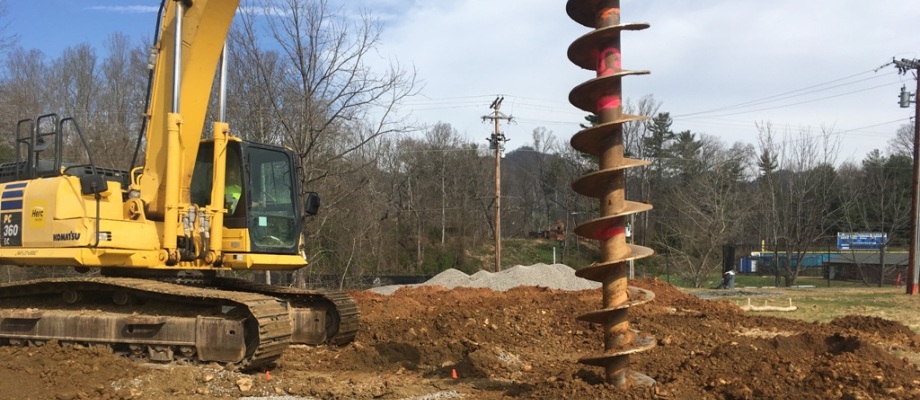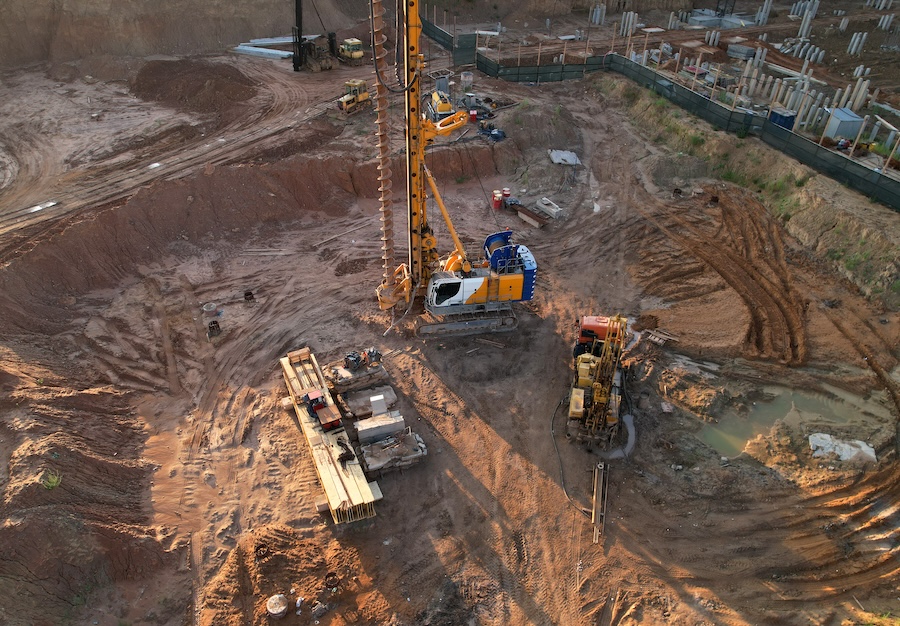Engineer of Record: What You Need to Find Out About Their Responsibilities and Influence
Engineer of Record: What You Need to Find Out About Their Responsibilities and Influence
Blog Article
The Value of Soil Analysis and Site Examination in the Geotechnical Industry: Ensuring Safety And Security and Security in Civil Design
In the geotechnical sector, dirt analysis and website investigation are fundamental elements that underpin the security and security of civil design jobs. By extensively understanding dirt homes, engineers can preemptively resolve prospective difficulties, eventually securing architectural integrity.
Recognizing Soil Features
In the realm of geotechnical engineering, a detailed understanding of dirt buildings is critical for notified decision-making and efficient job layout. The characterization of soil entails the examination of different physical and mechanical residential properties, such as grain dimension circulation, plasticity, leaks in the structure, shear, and communication toughness. These buildings dictate how soil behaves under various loading conditions and ecological impacts, making them vital for evaluating website suitability for building projects.
Soil category systems, such as the Unified Soil Classification System (USCS) and the AASHTO classification, supply frameworks for grouping soils based upon their features. This category help designers in predicting habits under tension, water flow, and negotiation, thereby influencing layout choices and construction techniques.
Furthermore, the interaction between dirt and bordering structures is an essential factor to consider in geotechnical design. Recognizing dirt properties assists determine possible obstacles, such as liquefaction in earthquake-prone locations or too much negotiation in soft soils. By extensively assessing these residential or commercial properties, geotechnical designers can guarantee the security, stability, and longevity of structures, inevitably adding to the total durability of civil engineering tasks.
Approaches of Dirt Evaluation

In-situ examinations consist of techniques such as Conventional Infiltration Tests (SPT), Cone Penetration Examinations (CPT), and vane shear tests. SPT examines the resistance of soil to infiltration, offering data on thickness and toughness, while CPT determines soil resistance and pore stress, yielding continual accounts of soil stratigraphy. Vane shear tests are specifically useful for evaluating the shear stamina of cohesive soils.
Lab examinations match these in-situ evaluations and include sampling soil for regulated testing. Common lab approaches include Atterberg restrictions, which identify the plasticity features of fine-grained soils, and compaction tests, which examine moisture-density connections. Added tests, such as triaxial compression and unconfined compression tests, are conducted to examine the shear toughness of soil samples under numerous problems.
Duty of Website Examination
Site investigation plays a critical role in the geotechnical design procedure, offering as the foundation for recognizing subsurface problems. This extensive assessment involves methodical exploration of dirt and rock residential or commercial properties, groundwater degrees, and other geological functions that influence job security and stability.
Usually, website investigations incorporate a selection of strategies, including drilling boreholes, tasting, and in-situ screening. These methods provide crucial data on the physical and mechanical attributes of the ground, educating designers regarding possible obstacles such as soil settlement, birthing capacity, and incline stability.
Furthermore, site examination assists in the identification of hazardous products and impurities, allowing the implementation of appropriate remediation measures. By establishing an accurate subsurface profile, website examinations assist to minimize threats related to building, ensuring that projects follow safety and security requirements and guidelines.
The searchings for from a thorough site examination not just overview design choices but additionally influence building approaches and timelines. In recap, the relevance of website investigation can not be overstated; it is an important action in the geotechnical design process, preparing for effective job execution while prioritizing public safety and security and environmental stability.
Influence on Job Layout
A complete understanding of dirt qualities significantly influences job style in the geotechnical industry. Dirt evaluation notifies designers regarding the mechanical residential or commercial properties, composition, and habits of the ground, which are essential aspects in figuring out the usefulness and safety and security of a construction project. Accurate information on soil stamina, compressibility, and leaks in the structure permit the development of efficient structure layouts, making certain that structures are sufficiently supported and secure throughout their life expectancy.
Moreover, the existence of contaminants or unsteady soil layers can trigger adjustments in project layout, such as choosing alternative building and construction techniques or products. This proactive method reduces threats connected to soil settlement, excessive loading, or side motion, therefore protecting look these up both the stability of the structure and public safety and security.
The combination of dirt analysis right into task layout likewise facilitates compliance with environmental considerations and regulative requirements. By attending to soil-related challenges early in the design procedure, designers can maximize source allocation and decrease prospective delays and costs associated with unpredicted website conditions. Inevitably, extensive dirt analysis enhances the overall high quality and sturdiness of civil design jobs, resulting in even more sustainable and resistant framework.
Situation Research Studies and Examples
Demonstrating the essential function of dirt evaluation in the geotechnical industry, numerous instance researches highlight its influence on project end results. One notable instance is the building and construction of a skyscraper building in midtown Los Angeles, where substantial soil testing exposed unpredictable subsurface problems. tailings engineer. By identifying the visibility of expansive clay, engineers had the ability to upgrade the structure, incorporating deep pilings that made sure security and safety and security, eventually protecting against potential structural failings

Last but not least, a dam project in the Southeast encountered hold-ups due to unexpected soil erosion problems. Thorough dirt analysis allowed engineers to apply efficient stablizing strategies, guaranteeing that the dam satisfied security guidelines while sticking to the project timeline. These cases emphasize the necessity of thorough soil evaluation and site examination, highlighting their crucial function in accomplishing successful and safe civil engineering projects.
Conclusion
To conclude, dirt evaluation and website investigation are basic parts of the geotechnical sector, playing a critical duty in making certain the security and security of civil engineering tasks. By supplying important data on dirt properties and subsurface conditions, these processes inform foundation layout and construction techniques. In addition, detailed investigations add to risk identification and danger reduction, inevitably enhancing the longevity and resilience of frameworks while enhancing resource allotment throughout the job lifecycle.
In the geotechnical sector, soil evaluation and site examination are fundamental elements that underpin the safety and security of civil engineering tasks. Comprehending soil buildings aids useful source identify prospective obstacles, such as liquefaction in earthquake-prone locations or too much negotiation in soft soils. SPT examines the resistance of soil to penetration, giving data on thickness and toughness, while CPT gauges dirt resistance and pore pressure, generating constant accounts of soil stratigraphy. These cases highlight the need of complete soil analysis and website investigation, highlighting their vital role in accomplishing risk-free and successful civil design tasks.
In final thought, soil evaluation and website investigation are basic components of the geotechnical market, playing click for source an important function in making sure the safety and security and security of civil engineering jobs.
Report this page